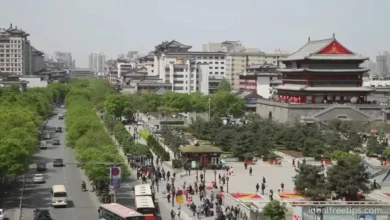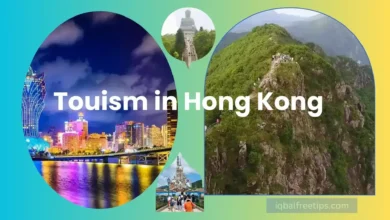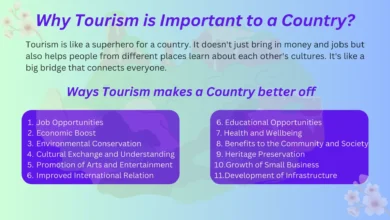Roles and Responsibilities of Tourism Planning
Tourism planning involves the implementation of various strategies and policies to increase tourism activities in certain destinations. Tourism planners can work with international or national governments, private companies or not-for-profit organizations, depending on their individual qualifications and skills. They are responsible for carrying out different aspects of tourism planning as assigned by their employers, including evaluating market potential, conducting research and collecting data, developing marketing strategies and setting industry standards, among other things. There are many diverse roles and responsibilities in the field of tourism planning, which vary from one industry to another. The following article explores some of these roles and responsibilities in more detail.
The Benefits:
The tourism industry is one of the most important industries in the world. In order to ensure that this industry continues to grow, it is important to have a clear understanding of the roles and responsibilities involved in tourism planning. By understanding these roles and responsibilities, you can be sure that your tourism business is running smoothly and efficiently. There are many factors that go into tourism planning such as Marketing, Advertising, Destination Selection and Planning. Tourism marketing may include writing travel brochures or blogs about the destination. Tourism advertising may include television ads or billboards around town. Destination selection may involve deciding which locations will provide visitors with good opportunities for hotels, restaurants, amusement parks or any other type of tourist attraction they might be looking for. Tourism planning involves making decisions on how to promote tourism and keep up with current trends. It’s also important to understand what the goals of tourism are before beginning any tourism plan so you know where you want your company to end up. Are you trying to increase visitor spending? Would you like more people visiting your city? What about promoting tourism through social media? Whatever your tourism objectives are, make sure you communicate them clearly to employees and partners. Tourism planning has been seen as a challenging but exciting career option by many people who enjoy working in this field. To summarize, there are three main ways of defining roles and responsibilities: by function (marketing, advertising), activity (planning) or level (local government vs. federal government).
Tourist Attraction:
A tourist attraction is a place where people can go to see something new or interesting. The roles and responsibilities of tourism planning vary depending on the size and type of attraction, but typically include things like market research, promoting the destination, and managing operations. Large attractions may also have to consider things like security and transportation. Smaller attractions might only need to manage operations. All these factors lead to the creation of an annual tourism plan. Tourism plans vary in scope, but they usually include marketing strategies and goals that can be met within a set period of time. These plans should be specific enough to allow for continual progress toward long-term goals while still being able to adjust course as necessary based on changing circumstances. Tourism planners must be attentive to shifts in technology, demographics, economic conditions, natural disasters, cultural trends, and even politics. Understanding how all these elements will affect tourism plans helps tourism planners create sustainable initiatives that will last over time.
The major responsibility of a tourism planner is the ability to use data analysis skills to determine the needs of potential customers. They must also be adept at creating marketing campaigns and determining what features will attract tourists when they visit an area.
Developmental Initiatives:
The first role of tourism planning is to develop initiatives that will help promote tourism in the area. This can include developing marketing campaigns, working with local businesses to promote tourist attractions, and more. The second role is to create a budget and plan for how these initiatives will be funded. The third role is to implement these initiatives and track their progress. The fourth role is to evaluate the results of the initiatives and make adjustments as needed. And finally, the fifth role is to communicate with stakeholders about the status of tourism planning efforts. Stakeholders are individuals or groups who have an interest in tourism plans. They might be government officials, industry professionals, non-profit organizations, business owners, or community members. Communication may take place through public meetings or interviews on social media channels such as Facebook and Twitter. Responsibilities vary depending on the type of tourism being planned. For example, if you are designing a tourism plan for an area where your goal is to increase overnight visits by 25% over five years, you would need to work closely with lodging properties and airlines while also engaging with the various communities within your jurisdiction.
Tourist Spots:
There are many roles and responsibilities that come with tourism planning. The first is to identify potential tourist spots. This involves research and a keen understanding of what tourists are looking for. Once potential spots are identified, it’s important to assess the feasibility of each one. This includes considering things like infrastructure, cost, and accessibility. Once a spot is chosen, it’s important to develop a plan for how to make it appealing to tourists. This can involve everything from marketing to design and construction. It’s also important to take into account other factors that may impact tourism such as safety, culture, and more. A big part of tourism planning is evaluation which means monitoring trends and gathering feedback on how the tourism industry is doing in an area. When necessary adjustments need to be made, these changes should be communicated in order to stay on top of all developments in this constantly changing field. In order to effectively communicate those changes, it’s crucial to understand not only the organization itself but its stakeholders as well. Effective communication with stakeholders leads to successful tourism plans.
Tourism as an Industry:
Tourism is one of the world’s largest industries, employing millions of people around the globe. It is also one of the most complex, with a multitude of stakeholders involved in its planning and execution. So what exactly are the roles and responsibilities of those involved in tourism planning? Let’s take a look. -Tourism Destination Management Organization (TDMO): A TDMO is typically responsible for overseeing all tourism related issues within their area or region.
-National Government: The national government plays an important role in developing policy for the tourism industry and regulating certain aspects such as safety and security.
-Regional Government: Regional governments have a more localized role to play which may include providing funding for projects and encouraging the development of local attractions. They will often work closely with nearby TDMOS to develop strategies that suit the needs of both regions. Local governments also have a significant role in tourism planning, they help promote destinations through advertising campaigns and make sure visitors are met by suitable facilities on arrival. All levels of government must work together to create an integrated plan that takes into account all facets of the industry including transport links, security requirements and environmental impact.
Planning and Execution:
Roles and responsibilities in tourism planning can vary greatly depending on the scope and size of the project. Generally, however, there are three main phases to tourism planning: formulation, implementation, and evaluation.
Formulation is the conceptual stage where planners develop ideas and proposals. This phase often includes market research, feasibility studies, destination branding, and so on.
Implementation is when the actual work begins. This might involve constructing infrastructure, developing marketing campaigns, training staff, and so forth. In this phase, most tourism plans would also include budgets and projected revenues.
Evaluation comes at the end of the process to assess what has been achieved and identify possible improvements for future plans. As such, tourism plan evaluators must have a thorough understanding of all aspects that went into the plan during its creation (marketing strategies, development goals, etc.).
The goal for tourism planning is for it to be an ongoing process that encompasses both strategic thinking as well as tactical execution. With tourism plans lasting anywhere from five years to over twenty years, successful tourism planning requires ample time commitment. For this reason, tourism planners will typically come from one of two backgrounds – either they were once in charge of implementing tourism projects or they were responsible for evaluating them.
The range of duties typically falls under four general categories: conception and strategy; design and construction; communication; logistics management. Often times these duties will overlap, with tasks falling under more than one category.
The Roles:
-Tourism planners need to be creative in order to come up with new and innovative ways to attract tourists.
-They also need to be good at problem solving in order to troubleshoot any issues that may arise.
-In addition, they need to be organized in order to keep track of all the different aspects of their job.
-They also need to be able to communicate effectively in order to coordinate with other members of their team. -It is important for them to know how to delegate tasks to others as well.
-Lastly, it is imperative for them to have a background in economics and marketing in order to understand how they can make the most profit from visitors while still keeping them happy. -Tourism planners typically have bachelor’s degrees in either hospitality management or public administration.
-Although there are no specific requirements for tourism planning jobs, they typically start out earning around $27,000 per year.
-This makes this profession an excellent career choice for people who want to earn a living wage but who also enjoy having variety within their work day.
Roles in Destination Development & Operation:
1. There is no one-size-fits-all answer to this question, as the roles and responsibilities of those involved in destination development and operation will vary depending on the size and scope of the project.
2. However, some common roles include destination marketing organizations (DMOs), local governments, developers, businesses, and community organizations.
3. DMOs are typically responsible for marketing the destination to potential visitors, while local governments may be responsible for infrastructure development and maintenance. Developers are responsible for building new attractions, hotels, restaurants and other amenities to support tourists visiting the destination. Businesses provide goods and services that appeal to travelers from all over the world. Community organizations play a role by helping integrate tourists into their communities with authentic cultural experiences.
4. All these stakeholders work together with a focus on sustainability so that future generations can enjoy what has been created today. 5. It’s important to remember that developing destinations requires collaboration between many different types of organizations and individuals. 6. The key thing to remember about this process is that it’s never finished—there are always opportunities for growth and improvement—so it’s vital not only to have strong leadership but also good communication among all participants at every stage of the process. And when talking about sustainable tourism, we must take care to protect natural resources like air quality and wildlife habitats.
Roles in Marketing & Promotion Section: Roles in Resource Management Section: Roles in Financial Planning Section: Roles in Monitoring, Evaluation & Research Section: Sustainability Issues:
Tourism planners have a wide range of responsibilities that contribute to the successful marketing, promotion, management, and evaluation of tourism destinations and experiences. In general, these responsibilities can be divided into five key areas: marketing and promotion, resource management, financial planning, monitoring, evaluation and research, and sustainability issues. There is no one person who has all the skills required for this position; it is up to the organization or individual to create an effective team by assigning tasks accordingly. It’s also important for someone in this position to keep up with their professional development by seeking out new resources and networking with other professionals in their field. One way to do this is through certification programs offered by organizations like The American Society of Travel Agents (ASTA) or Destination Marketing Association International (DMAI). An additional way for people in this position to stay up-to-date on industry trends is by attending conferences such as ASTA’s Winter Educators Conference.
The Role of Marketing & Promotion Section:
The responsibility for marketing and promotion falls under the domain of the tourism planner’s job duties. They may manage marketing campaigns, provide information about products and services to potential visitors, work with outside agencies on promotions and events, develop partnerships with travel agents and media outlets, oversee advertising budgets, manage relationships with vendors providing products or services to the destination. Often tourism planners will also be responsible for developing product brochures which detail visitor attractions.
The Role of Resource Management Section:
A tourism planner’s role in managing resources is to ensure that there are enough accommodations, transportation options, restaurants, outdoor activities and event venues available to meet demand. They must plan ahead for upcoming needs so they don’t experience shortages or overcrowding during peak seasons. Tourism planners must also take into account local zoning laws when creating plans for building hotels and other facilities within their jurisdiction. For example, in order to protect the coastal environment, some communities restrict the number of overnight stays per acre that property owners can allow. They should also consider environmental factors including air quality, water quality and conservation measures related to natural habitats when implementing their business plans. Tourism planners need to find ways to encourage tourists and locals alike to reduce their impact on the environment. One strategy could be to promote eco-friendly practices by offering incentives for electric car rentals or accommodation at eco-friendly properties. Another strategy might be to educate travelers about how their actions affect the environment – for instance, teaching them how much water they use each day versus how much their average Moroccan counterpart uses each day. Some tourism planners may choose to pursue certifications in sustainable tourism, such as the Certified Sustainable Tourism Professional designation from DMAI.
The Role of Financial Planning Section:
As with any profession, a tourism planner’s success is tied to their understanding of finances. This means that the tourism planner should possess an understanding of cost and revenue projections for their destinations, negotiate contracts with suppliers, work with banks to secure financing for projects and/or loans for expenses. They also need to be able to explain how their decisions relate to the bottom line and demonstrate how the overall profitability of a destination is measured. The tourism planner can also use their knowledge of accounting and finance to help market destinations by focusing on aspects that are appealing for investors, such as predictable earnings or low risk. This helps give a sense of stability and makes a location more attractive for outside funding. In addition, a tourism planner may work with the finance department to allocate budgets and monitor expenditures. They may also need to be knowledgeable about how to collect taxes and set rates for tourism-related fees such as permits, licenses, utility fees and parking rates.
The Role of Monitoring, Evaluation & Research Section:
The responsibility for monitoring, evaluation and research is often shared among different members of the tourism planning team. One way to divide up the work is by looking at whether they are interested in qualitative or quantitative data collection methods. Qualitative data relies on direct observation, intuition and interpretation of what the researcher sees. Quantitative data involves collecting numbers in a systematic manner that allows for comparison between objects or individuals. Qualitative research methods may include interviewing people, taking photographs, conducting surveys and focus groups while quantitative methods may include conducting customer surveys or performing customer satisfaction studies. Qualitative and quantitative approaches are not mutually exclusive and are often used together to learn more about how customers feel about a given service or place. The tourism planner’s responsibility is to identify the type of data that is appropriate for the situation and then work with others on the team to conduct the study. They should be familiar with ethical and legal guidelines that govern data collection, as well as have an understanding of how to analyze and present results. The tourism planner should also be aware of the limitations of their work and how it may differ depending on the industry they are working in. Tourism planners who work with wildlife, for example, should be aware that population counts are usually based on sightings or estimates rather than comprehensive data because it is difficult to count all animals. Visitor surveys also provide less accurate information when done after people have left a tourist site since they cannot accurately recall details of their experience. There are many other ways that the tourism planning field differs depending on where the planner works, so those considering this career should consider the following:
The Role of Resource Management Section:
Working within resource management requires an understanding of ecological sustainability and protecting natural resources. This includes having knowledge about preserving biodiversity and safeguarding ecosystems.
You may like:




